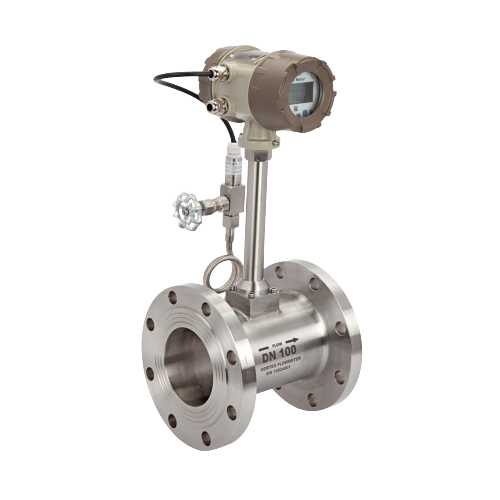In view of the actual situation of steam flow, the method of steam flow measurement is mainly introduced, and the reasons for the large measurement error are analyzed. The methods and measures to improve the accuracy of flow measurement, as well as the matters needing attention in the correct selection of steam flow measurement instruments, are proposed, which can be used as a reference for flow measurement.1 Uncertainty of superheated steam flow measurementSuperheated steam is obtained by heating and increasing the temperature of saturated steam. The temperature and pressure of the superheated steam are two independent parameters, and other state parameters are determined by these two parameters. After the superheated steam is transported, it will change from the superheated state to the saturated or supersaturated state as the working conditions (such as temperature, pressure) change, especially when the superheat is not high, because the heat loss temperature decreases. It becomes saturated steam or supersaturated steam with water droplets. Saturated steam is suddenly greatly decompressed, and part of the liquid droplets will also be transformed into superheated steam during adiabatic expansion, thus forming a vapor-liquid two-phase flow medium. Generally, flowmeters cannot accurately detect the flow of two-phase fluids, resulting in flow measurement errors. .2 The uncertainty of saturated steam flow measurement There is a one-to-one correspondence between the temperature and pressure of saturated steam, and there is only one independent parameter between the two. Saturated steam is easy to condense. If there is heat loss during the transmission process, liquid droplets or mist will form in the steam, which will lead to a decrease in temperature and pressure. Steam containing liquid droplets or liquid mist is called wet steam. Strictly speaking, saturated steam more or less contains liquid droplets or liquid mist, so different states cannot be described by the same gas state equation. The content of liquid droplets or liquid mist in saturated steam reflects the quality of steam, and is generally expressed by the parameter of dryness. The dryness of steam refers to the percentage of dry steam per unit volume of saturated steam. It is difficult to accurately measure saturated steam flow. Generally, flow meters cannot accurately detect the flow of two-phase fluids. Fluctuations in steam pressure will cause changes in the specific volume of steam, and additional errors will occur in the flow measurement value. Therefore, in saturated steam measurement, we must try to keep the steam break at the measurement point stable, and if necessary, compensation measures should be taken.3 Measurement error analysis Currently, flow meters are used to measure steam flow, and the measurement medium refers to single-phase superheated steam or saturated steam. For steam whose phase flow changes frequently, there will be a problem of inaccurate measurement. In this regard, it is necessary to maintain the superheat of the steam and reduce the water content of the steam as much as possible, such as strengthening the heat preservation measures of the steam pipe and reducing the pressure loss of the steam, so as to improve the accuracy of the measurement. However, these methods cannot completely solve the problem of accurate steam flow measurement. The fundamental way to solve this problem is to develop a flow meter that can measure two-phase flow media.There are many types of flow meters used to detect gas flow. Velocity and specific volume flow meters are most commonly used. Their common feature is that they can measure the specific volume flow of gas, and the specific volume flow Gv is a function of state. The specific volume flow rate of gas does not accurately reflect the actual flow rate. In this regard, in engineering, it is generally expressed by the standard state specific volume flow value or mass flow rate. When using a scaled gas flow meter, select the normal temperature and pressure of the gas as the design conditions, and convert the specific volume flow under the design state into the standard specific volume flow or mass flow. The conversion coefficient contains the gas specific volume factor. When the gas is working If the state deviates from the set juice state, the measured value of the specific volume flow will produce an error. In addition, changes in gas content, content, or temperature all have an impact on flow measurement. Therefore, the measurement of steam flow requires more compensation measures, and the compensation factors due to changes in the steam state are also more complicated.The specific volume of superheated steam is determined by the two parameters of steam temperature and pressure, and within different parameter ranges, the expression of specific volume is different, and cannot be expressed by the same general formula, so a unified specific volume calculation formula cannot be obtained. The temperature and pressure compensation bodies can only be derived individually. In situations where the temperature and pressure fluctuate in a large range, in addition to temperature and pressure compensation, it is also necessary to consider the compensation for the volume expansion coefficient ε of the superheated steam.
Post time: 21-09-21
